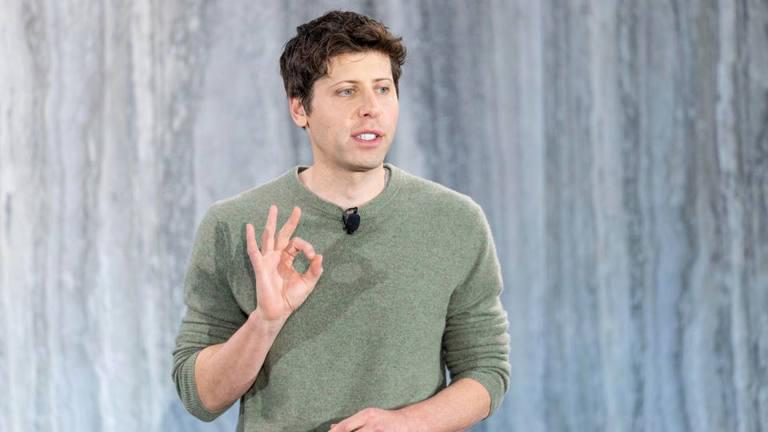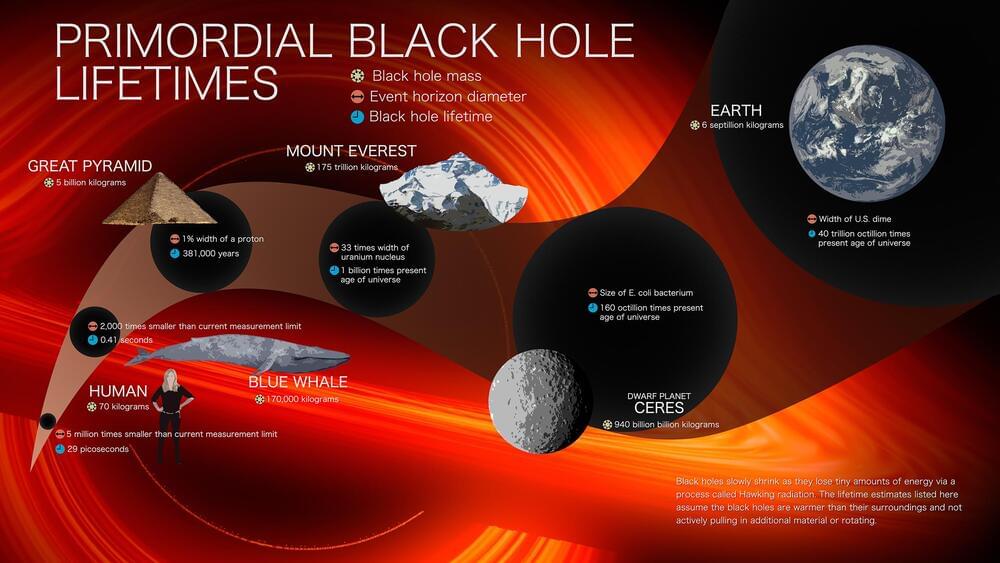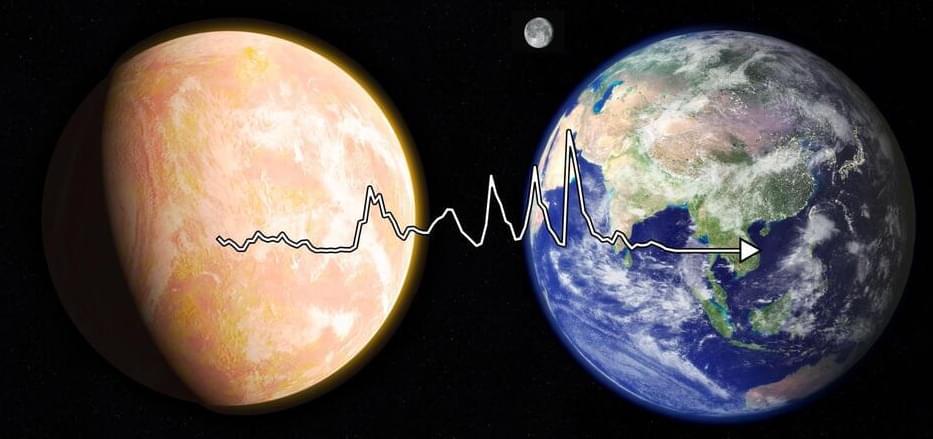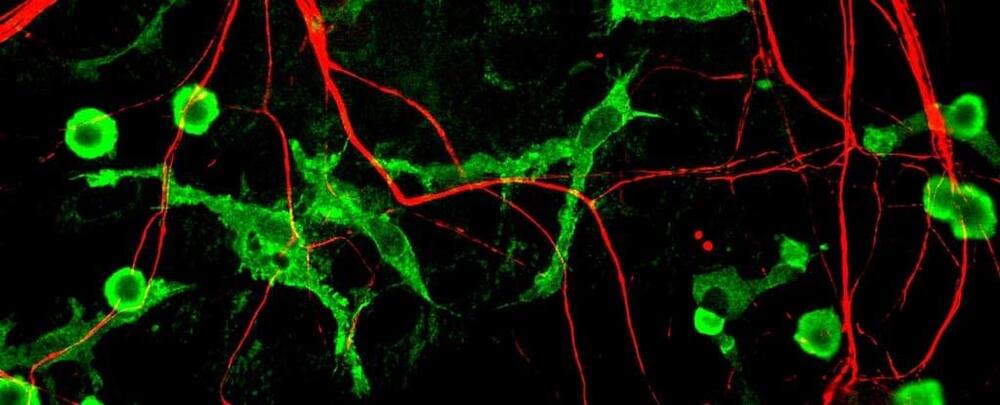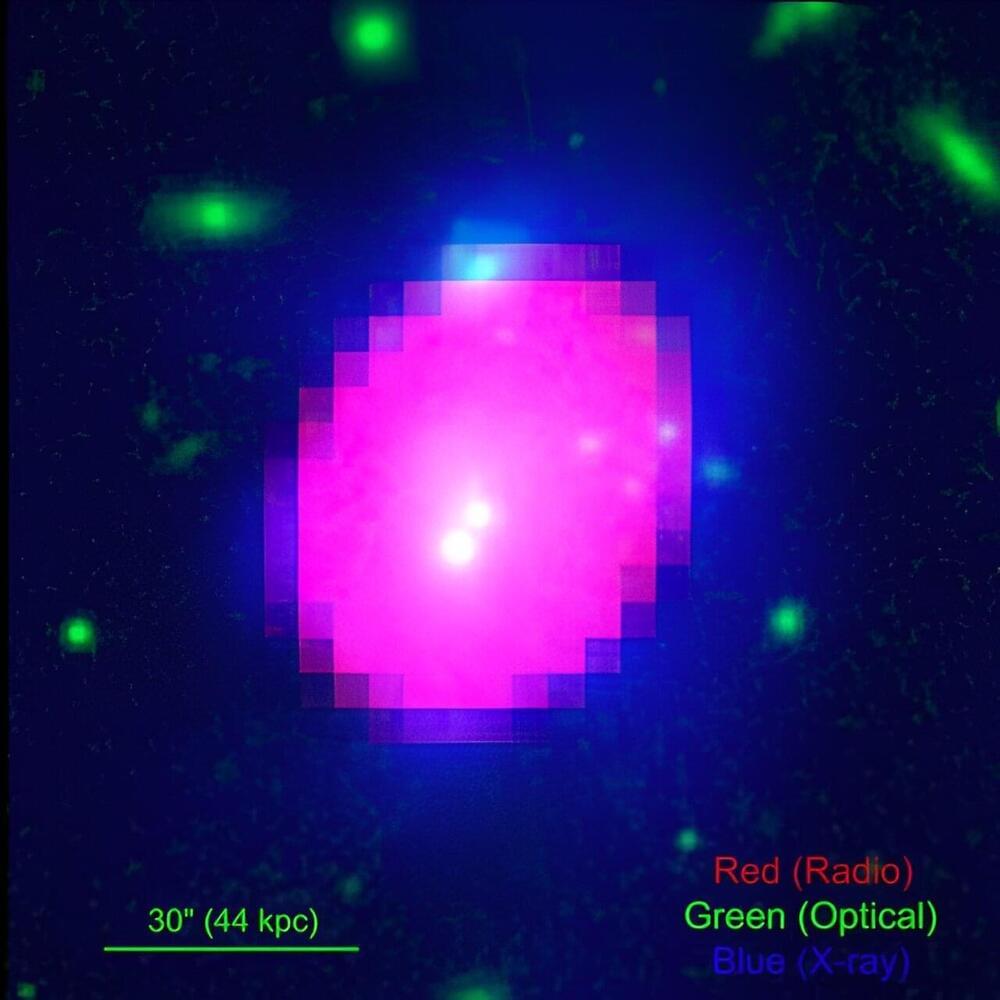Page 783
May 28, 2024
How NASA’s Roman Mission will Hunt for Primordial Black Holes
Posted by Natalie Chan in categories: cosmology, particle physics
Astronomers have discovered black holes ranging from a few times the sun’s mass to tens of billions. Now a group of scientists has predicted that NASA’s Nancy Grace Roman Space Telescope could find a class of “featherweight” black holes that has so far eluded detection.
Today, black holes form either when a massive star collapses or when heavy objects merge. However, scientists suspect that smaller “primordial” black holes, including some with masses similar to Earth’s, could have formed in the first chaotic moments of the early universe.
“Detecting a population of Earth-mass primordial black holes would be an incredible step for both astronomy and particle physics because these objects can’t be formed by any known physical process,” said William DeRocco, a postdoctoral researcher at the University of California Santa Cruz who led a study about how Roman could reveal them.
May 28, 2024
Decoding Life’s Origins With Lost Biochemical Clues
Posted by Paul Battista in categories: biological, chemistry
A new study demonstrates that just a handful of “forgotten” biochemical reactions are needed to transform simple geochemical compounds into the complex molecules of life.
The origin of life on Earth has long been a mystery that has eluded scientists. A key question is how much of the history of life on Earth is lost to time. It is quite common for a single species to “phase out” using a biochemical reaction, and if this happens across enough species, such reactions could effectively be “forgotten” by life on Earth. But if the history of biochemistry is rife with forgotten reactions, would there be any way to tell?
This question inspired researchers from the Earth-Life Science Institute (ELSI) at the Tokyo Institute of Technology, and the California Institute of Technology (CalTech) in the USA. They reasoned that forgotten chemistry would appear as discontinuities or “breaks” in the path that chemistry takes from simple geochemical molecules to complex biological molecules.
May 28, 2024
Revolutionary Discovery: Scientists Prove Existence of New Type of Magnetism
Posted by Paul Battista in category: particle physics
A recent study published in Nature reveals that an international team of scientists has challenged the conventional division of magnetism into two types: ferromagnetism, known for thousands of years, and antiferromagnetism, identified roughly a century ago. The researchers have now successfully demonstrated, through direct experiments, a third type of magnetism—altermagnetism—which had been theoretically predicted by scientists from Johannes Gutenberg University Mainz and the Czech Academy of Sciences in Prague several years earlier.
Limitations of the previously known magnetic branches for information technologies
We usually think of a magnet as a ferromagnet, which has a strong magnetic field that keeps a shopping list on the door of a refrigerator or enables the function of an electric motor in an electric car. The magnetic field of a ferromagnet is created when the magnetic field of millions of its atoms is aligned in the same direction. This magnetic field can also be used to modulate the electric current in information technology (IT) components.
May 28, 2024
Exercise Reverses Specific Age-Related Brain Changes In Mice
Posted by Paul Battista in categories: life extension, neuroscience
Regular physical activity can offer major rejuvenation powers, helping people retain strength as they age while buffering against illness and injury. As a growing body of research suggests, this includes valuable protection throughout our bodies – including our brains.
According to a new study by researchers from the University of Queensland in Australia, exercise can slow or even prevent cognitive decline in mice, with a “profound and selective effect” on certain types of brain cell.
On top of demonstrating such an intriguing phenomenon in a fellow mammal, the new study also sheds light on how this effect is triggered inside the brains of physically active mice.
May 28, 2024
Paper page — LoGAH: Predicting 774-Million-Parameter Transformers using Graph HyperNetworks with 1/100 Parameters
Posted by Cecile G. Tamura in category: robotics/AI
LoGAH: Predicting 774-Million-Parameter Transformers using Graph HyperNetworks with 1/100 Parameters.
https://huggingface.co/papers/2405.
A good initialization of deep learning models is essential since it can help them converge better and faster.
May 28, 2024
Sloshing cold front detected in a massive galaxy cluster
Posted by Shubham Ghosh Roy in category: space
By analyzing the data from NASA’s Chandra X-ray observatory, astronomers from India and South Africa have investigated a massive galaxy cluster known as Abell 2566. They detected sloshing cold fronts in the intracluster medium (ICM) of this cluster. The finding was reported in a research paper published May 17 on the preprint server arXiv.
May 28, 2024
Why we must overcome the barriers to generative biology
Posted by Shubham Ghosh Roy in categories: bioengineering, biological, robotics/AI
Synthetic biology has been game-changing and with generative artificial intelligence, generative biology holds immense potential; let’s just speed it up.
May 28, 2024
The Earth’s changing, irregular magnetic field is causing headaches for polar navigation
Posted by Saúl Morales Rodriguéz in category: particle physics
The Earth’s liquid molten outer core, composed mostly of iron and nickel, exerts an electromagnetic field extending from the north and south pole that protects the planet from harmful solar particle radiation.
May 28, 2024
Scientists discover polar Bloch points in strained ferroelectric films
Posted by Saúl Morales Rodriguéz in category: entertainment
Researchers from the Institute of Metal Research (IMR) of the Chinese Academy of Sciences (CAS) and collaborators from the Institute of Physics of CAS have directly observed polar Bloch points in strained ferroelectric films.
Their work is published in Nature Communications.
Based on their previous work on the polar meron lattice, the researchers considered the model of a tensile-strained ultrathin ferroelectric PbTiO3 film sandwiched by symmetric electrodes in phase-field simulations and found that the merons transform into Bloch points with the increase of the electrode thickness.
